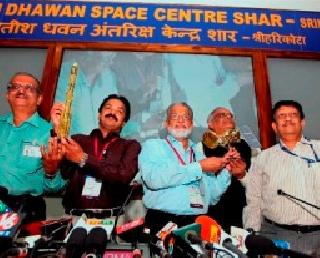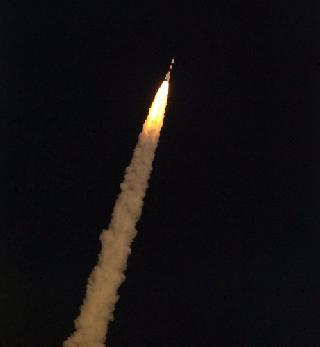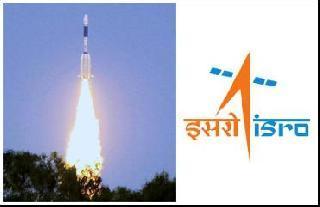
ISRO Chairman K Radhakrishnan and other scientists during a press conference after ISRO successfully launched India's first mission to Mars on board its PSLV C25 from Satish Dhawan Space Centre at Sriharikota in Andra Pradesh on Tuesday. A PTI photo
SRIHARIKOTA (PTI): Exuding confidence over its planned and future missions, an upbeat ISRO is gearing up for many launches starting December, including GSLV.
The ISRO will also construct a second vehicle launch building at the second launch pad at Satish Dhawan Space Centre this year, which would increase its launching capacity to 10-12 launches per year, ISRO chief K Radhakrishnan said.
To a query on the proposed third launch pad, he said, "We are preparing the initial configuration studies. The third launch pad has to take into consideration the requirements of GSLV Mark III vehicle and other future launch vehicles."
After its launch of the GLSV D5 carrying GSAT 14 in December, ISRO would launch Indian Regional Navigation Satellite System-1B probably in February next year.
The launch of GSLV D5 was postponed on August 19 about two hours before lift-off after detection of a fuel leak in the rockets' second stage.
In the next 18 months, five remaining satellites for the IRNSS would be launched, Radhakrishnan said, adding, GSLV Mark II would be ready by 2016-17.
"Meanwhile, a 200 tonne engine is being developed at the Liquid Propulsion Systems Centre at Thiruvananthapuram," he said.
Nine satellites are already waiting for GSLV Mark II.
Explaining the complexities in the GSLV, he said unlike PSLV, the GSLV involved a large number of fluid components.
"Each vehicle is unique. We are working on the vehicle.
After last time, we are now able to pinpoint at the flaw and improve on them," S Ramakrishnan, Director, Vikram Sarabhai Space Centre said.
The Indian space agency was not spreading itself thin looking at various space missions like solar, moon, mars and others and the Mars mission has not diverted its attention, Radhakrishnan said.
Confident of many space missions in the future, which can use common technologies from the present mission, Radhakrishnan said "We are not certainly spreading ourself thin."
The Space Department Secretary also said that ISRO has plans of a mission to explore Sun's corona, one to explore asteroid Vesta, among others.
He said the national space agency would also increase its total number of transponders to 400.
"We will also focus on increasing the imaging capacity, when it comes to remote sensing/earth observation satellites," he said.
 Previous Article
Previous Article Next Article
Next Article












The Indian Air Force, in its flight trials evaluation report submitted before the Defence Ministry l..
view articleAn insight into the Medium Multi-Role Combat Aircraft competition...
view articleSky enthusiasts can now spot the International Space Station (ISS) commanded by Indian-American astr..
view article